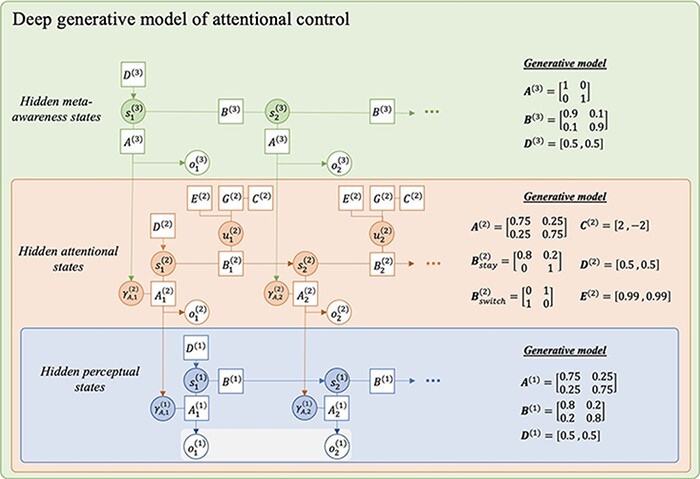Figure 6.

The probabilistic graphical model used to simulate an agent capable of attentional control during a focused-attention perceptual task. Hidden states at each level have a single factor with two levels, the perceptual state can be either ‘standard’ or ‘deviant’, the attentional state can be ‘focused’ or ‘distracted’, and the meta-awareness state can be ‘high’ or ‘low’. Higher-level states determine the likelihood precision at the level below. The agent is given the instruction to pay attention to a visual oddball stimulus; this is modelled as a preference in C(2) to observe the ‘focused’ outcome at the second level. Action here is only defined on the second level, with two possible actions u(2), ‘stay’ and ‘switch’, which condition the attentional transition matrix B(2) as shown.
